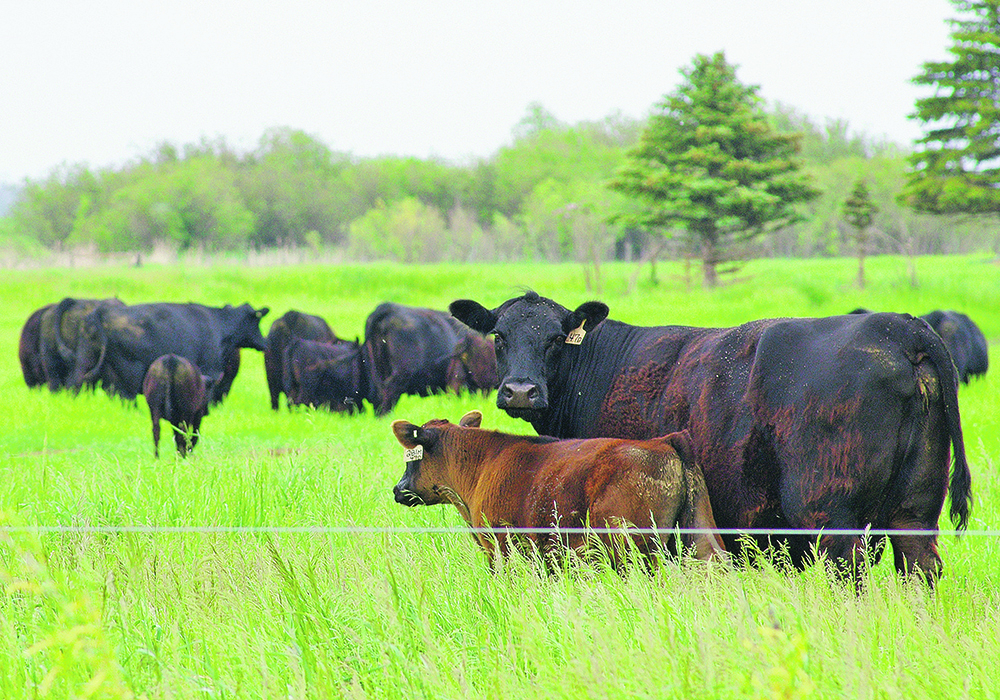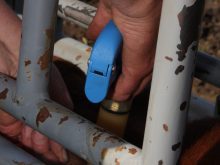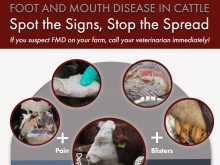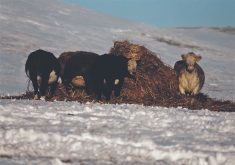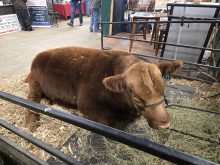The Beef Cattle Research Council says the national survey is intended to replace previous regional surveys
Glacier FarmMedia – Results from the first Canadian Cow-Calf Survey, which gathered insights from 600 producers across Canada, have been published by the Beef Cattle Research Council.
The project is meant to provide a comprehensive assessment of cow-calf production practices and herd performance throughout the country and was spearheaded by the council and Canfax, as well as regional representatives.
Results cover the 2022 breeding season and 2023 weaned calf crop.
Read Also

Canada told trade crisis solutions in its hands
Canadians and Canadian exporters need to accept that the old rules of trade are over, and open access to the U.S. market may also be over, says the chief financial correspondent for CTV News.
Melissa Atchison, a research and extension specialist with Manitoba Beef Producers, is pleased the information is now available.
“It’s excellent. It (answers) questions about (producers’) weaned calf crop and any reasoning and rationale for some of their production practices, or why they may or may not be adopters of certain practices,” she said.
“There’s huge value in it … These results are going to be used to help the BCRC prioritize their research and extension strategies by having a real look at what is being adopted at the industry level, at the farm level, and hone in on different production practices and tailor the research that will help producers at the grassroots level.”
The survey found that breeding season length varies by region, with Alberta and Saskatchewan reporting shorter seasons (80 and 87 days, respectively) compared to Quebec and the Maritimes, where the season was 131 days.
Research has shown advantages with a tighter breeding season (63 days or less), the report noted. Nationally, about 32.3 per cent of respondents met that threshold for cows and 38.4 per cent met it for heifers. Manitoba was under those averages, at 27 and 27.3 per cent, respectively.
The national average open rate for cows in 2022 was 7.4 per cent, while heifers had an 11 per cent open rate. Manitoba reported the highest rates for cows (10.1 per cent) and heifers (13.2 per cent).
Calving season in Canada averaged 89 days for cows and 59 days for heifers, with Manitoba stretching to 100 days for cows and 70 for heifers.
Experts peg ideal calving season length between 60 and 80 days for the sake of a uniform calf crop and reproductive efficiency, among other reasons. Producers are also told that 60 per cent of females would ideally calve within the first 21 days of the season and 20 to 25 per cent in the following cycle.
On average, Canadian producers wean at 212 days for heifer-born calves and 215 days for cow-born calves. Those born to heifers weighed an average 551 pounds at weaning, compared to 577 lb. among those born to cows.
The survey noted that Canada’s beef cattle code recommends low-stress weaning, which authors said was “key to supporting welfare and disease prevention in freshly weaned calves, thereby reducing the need for antibiotic treatments.”
However, traditional separation remained the most popular choice among survey respondents at 50.8 per cent. Of those using alternative methods, 32.4 per cent used fenceline weaning, while 12 per cent implemented two-stage weaning or nose paddles. Two per cent opted for natural weaning.
Among those using traditional weaning methods, 21.1 per cent lacked the necessary time, labour or resources to adopt alternative weaning methods, 11.9 per cent saw no financial incentive to change their approach and 58.7 per cent said they weaned traditionally because they sold calves right after weaning.
Regardless of method, 60 per cent of respondents sold their calves at weaning. Of those retaining ownership, almost 60 per cent kept calves for more than 120 days.
The survey found an average death loss in 2023 of 2.2 per cent for calves born to cows and 3.7 per cent for calves from heifers within 24 hours of birth. Mortality rates between 24 hours and weaning stood at 2.5 per cent for cows’ calves and 2.9 per cent for heifers’ calves.
Producers reported using a variety of resuscitation techniques on unresponsive newborns. Some 37 per cent put calves in the recovery position and rub them and 30 per cent poke a straw or finger into the calf’s nose.
Far fewer producers hang calves upside down, with 66 per cent saying they never use this method, compared to more than half who reported it when the industry surveyed western Canadian practices in 2017.
Feed testing was common for all Canadian producers; 69 per cent test feed either occasionally or annually. Of those, 48.8 per cent used results to build their own rations, 35.8 per cent worked with a nutritionist and 5.3 per cent got help from an extension specialist.
About 31 per cent said they did not test their feed, since they were confident in cattle health or were uncertain about the process.
Most herds (94 per cent) were vaccinated, with highest rates for clostridial, reproductive and bovine respiratory diseases.
Remote drug delivery devices are not widely used, the survey showed, with 63.3 per cent of respondents reporting they never use them. Producers who do use them do so for foot rot and eye infections.
Over half of respondents (53.4) also said they did not use pain mitigation for castration, primarily because calves are typically castrated before three months.
Most producers — 79.2 per cent — use paper records, while 47.8 per cent rely on spreadsheets. Slightly less than 18 per cent use electronic cattle management software.
The research council plans to conduct this survey every five years. Atchison believes these surveys will help beef producers plan their next moves in an ever-changing industry.
“This can help folks almost get in their minds, start establishing benchmarks of their own herd against maybe their contemporaries in their region,” she said.
“It’s a great way to start knowing what data you maybe should start collecting and then use that in a way to make more informed decisions.”




